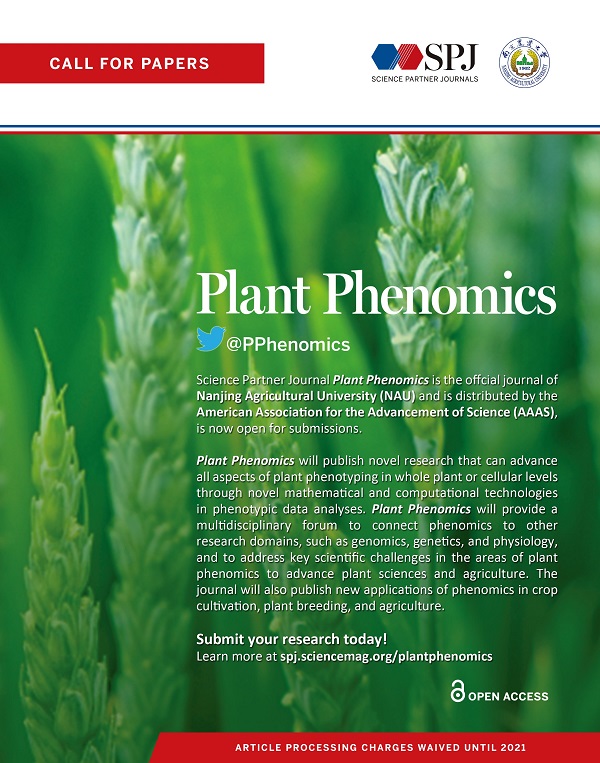基于数字图像的小麦种质资源多维性状遗传变异评价途径
IF 6.4
1区 农林科学
Q1 AGRONOMY
引用次数: 0
摘要
本文章由计算机程序翻译,如有差异,请以英文原文为准。
A Pathway to Assess Genetic Variation of Wheat Germplasm by Multi-dimensional Traits with Digital Images
In this paper, a new pathway was proposed to assess the germplasm genetic variation by multidimensional traits of wheat seeds generated from digital images. A machine vision platform was first established to reconstruct wheat germplasm 3D model from omnidirectional image sequences of wheat seeds. Then, multidimensional traits were conducted from the wheat germplasm 3D model, including seed length, width, thickness, surface area, volume, maximum projection area, roundness, and 2 new defined traits called cardioid-derived area and the index of adjustment (J index). To assess genetic variation of wheat germplasm, phenotypic coefficients of variation (PCVs), analysis of variance (ANOVA), clustering, and the defined genetic variation factor (GVF) were calculated using the extracted morphological traits of 15 wheat accessions comprising 13 offspring and 2 parents. The measurement accuracy of 3D reconstruction model is demonstrated by the correlation coefficient (R) and root mean square errors (RMSEs). Results of PCVs among all the traits show importance of multidimensional traits, as seed volume (22.4%), cardioid-derived area (16.97%), and maximum projection area (14.67%). ANOVA shows a highly significance difference among all accessions. The results of GVF innovatively reflect the connection between genotypic variance and phenotypic traits from parents to offspring. Our results confirmed that extracting multidimensional traits from digital images is a promising high-throughput and cost-efficient pathway that can be included as a valuable approach in genetic variation assessment, and it can provide useful information for genetic improvement, preservation, and evaluation of wheat germplasm.
求助全文
通过发布文献求助,成功后即可免费获取论文全文。
去求助
来源期刊

Plant Phenomics
Multiple-
CiteScore
8.60
自引率
9.20%
发文量
26
审稿时长
14 weeks
期刊介绍:
Plant Phenomics is an Open Access journal published in affiliation with the State Key Laboratory of Crop Genetics & Germplasm Enhancement, Nanjing Agricultural University (NAU) and published by the American Association for the Advancement of Science (AAAS). Like all partners participating in the Science Partner Journal program, Plant Phenomics is editorially independent from the Science family of journals.
The mission of Plant Phenomics is to publish novel research that will advance all aspects of plant phenotyping from the cell to the plant population levels using innovative combinations of sensor systems and data analytics. Plant Phenomics aims also to connect phenomics to other science domains, such as genomics, genetics, physiology, molecular biology, bioinformatics, statistics, mathematics, and computer sciences. Plant Phenomics should thus contribute to advance plant sciences and agriculture/forestry/horticulture by addressing key scientific challenges in the area of plant phenomics.
The scope of the journal covers the latest technologies in plant phenotyping for data acquisition, data management, data interpretation, modeling, and their practical applications for crop cultivation, plant breeding, forestry, horticulture, ecology, and other plant-related domains.
 求助内容:
求助内容: 应助结果提醒方式:
应助结果提醒方式:


